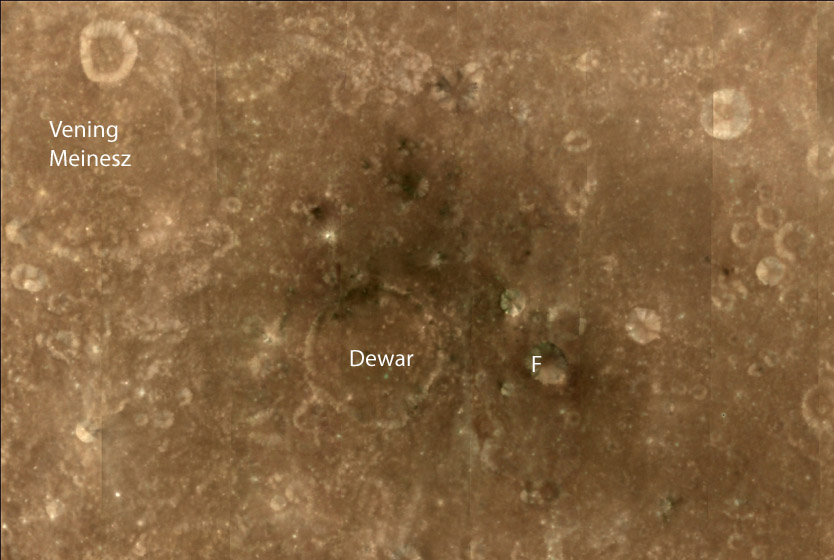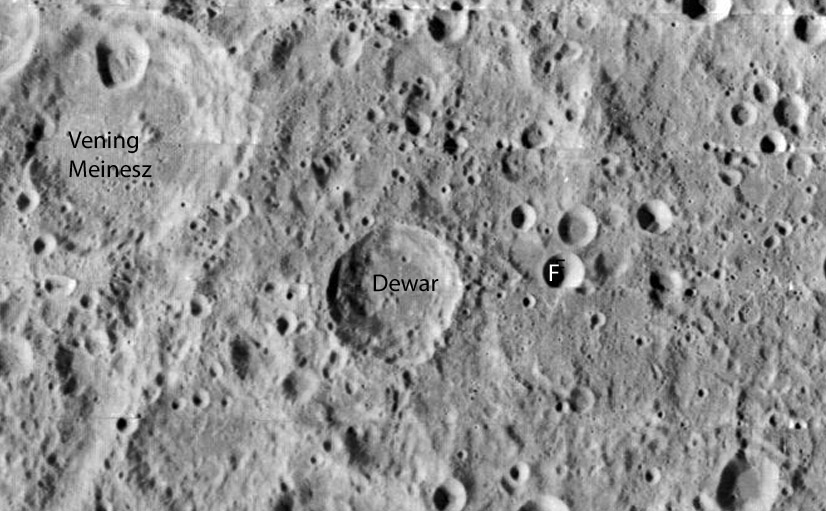Difference between revisions of "May 20, 2009"
| Line 1: | Line 1: | ||
__NOTOC__ | __NOTOC__ | ||
=Another Leak= | =Another Leak= | ||
| − | |||
<!-- ws:start:WikiTextHeadingRule:2:<h1> --> | <!-- ws:start:WikiTextHeadingRule:2:<h1> --> | ||
<!-- ws:start:WikiTextLocalImageRule:8:<img src="/file/view/LPOD-May20-09b.jpg/74262851/LPOD-May20-09b.jpg" alt="" title="" /> -->[[File:LPOD-May20-09b.jpg|LPOD-May20-09b.jpg]]<!-- ws:end:WikiTextLocalImageRule:8 --><br /> | <!-- ws:start:WikiTextLocalImageRule:8:<img src="/file/view/LPOD-May20-09b.jpg/74262851/LPOD-May20-09b.jpg" alt="" title="" /> -->[[File:LPOD-May20-09b.jpg|LPOD-May20-09b.jpg]]<!-- ws:end:WikiTextLocalImageRule:8 --><br /> | ||
| Line 7: | Line 6: | ||
<em>Clementine image (above) and Lunar Orbiter 2-034M</em> <br /> | <em>Clementine image (above) and Lunar Orbiter 2-034M</em> <br /> | ||
<br /> | <br /> | ||
| − | Lunar volcanism, mostly mare lavas and some pyroclastics, occurs largely within and near impact basins. There are [http://www.lpod.org/?m=20060312 almost] no examples of isolated volcanics in the nearside highlands. But on the farside the story is different. Most of the lavas there are indeed within a basin, the South Pole-Aitken Basin, but there are also about a dozen isolated [http://lpod.wikispaces.com/April+26%2C+2009 leaks] of volcanic material. Here is another one, centered at 166°E and 1.8°S. This cluster of dark material is scattered around small craters just north and east of 50 km wide Dewar. These look like normal impact craters, so presumably the dark material is buried basaltic lavas (or igneous intrusions - magma that hasn't erupted) that have been excavated by the impacts. The question is why are these volcanic rocks near enough the surface to be brought up by small crater impacts, but have not erupted on their own?<br /> | + | Lunar volcanism, mostly mare lavas and some pyroclastics, occurs largely within and near impact basins. There are [http://www.lpod.org/?m=20060312" rel="nofollow almost] no examples of isolated volcanics in the nearside highlands. But on the farside the story is different. Most of the lavas there are indeed within a basin, the South Pole-Aitken Basin, but there are also about a dozen isolated [http://lpod.wikispaces.com/April+26%2C+2009 leaks] of volcanic material. Here is another one, centered at 166°E and 1.8°S. This cluster of dark material is scattered around small craters just north and east of 50 km wide Dewar. These look like normal impact craters, so presumably the dark material is buried basaltic lavas (or igneous intrusions - magma that hasn't erupted) that have been excavated by the impacts. The question is why are these volcanic rocks near enough the surface to be brought up by small crater impacts, but have not erupted on their own?<br /> |
<br /> | <br /> | ||
| − | <em>[mailto:tychocrater@yahoo.com Chuck Wood]</em><br /> | + | <em>[mailto:tychocrater@yahoo.com" rel="nofollow Chuck Wood]</em><br /> |
<br /> | <br /> | ||
<strong>Related Links</strong><br /> | <strong>Related Links</strong><br /> | ||
Revision as of 19:08, 4 January 2015
Another Leak


Clementine image (above) and Lunar Orbiter 2-034M
Lunar volcanism, mostly mare lavas and some pyroclastics, occurs largely within and near impact basins. There are " rel="nofollow almost no examples of isolated volcanics in the nearside highlands. But on the farside the story is different. Most of the lavas there are indeed within a basin, the South Pole-Aitken Basin, but there are also about a dozen isolated leaks of volcanic material. Here is another one, centered at 166°E and 1.8°S. This cluster of dark material is scattered around small craters just north and east of 50 km wide Dewar. These look like normal impact craters, so presumably the dark material is buried basaltic lavas (or igneous intrusions - magma that hasn't erupted) that have been excavated by the impacts. The question is why are these volcanic rocks near enough the surface to be brought up by small crater impacts, but have not erupted on their own?
" rel="nofollow Chuck Wood
Related Links
Bussey & Spudis plate 85



